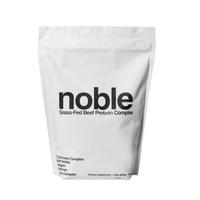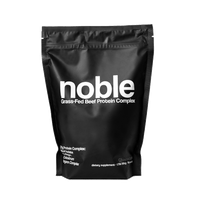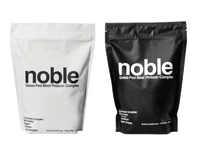Lunchables Was Started as a Marketing Ploy to Sell Extra Bologna.
Share
In 1988, Oscar Mayer needed a quick way to sell stockpiles of bologna, fake cheese, and butter crackers.
Billions of dollars and calories later, enter the insane story of Lunchables.

In the 1980s - Bologna, the staple deli meat of Oscar Mayer, was recording record-low sales.
With the advent of the USDA guidelines, Americans were more conscious of their food choices and pulling back on meat in general.

Oscar Mayer needed a solution and quickly. Deli meats were the cornerstone of it's business. It was time to adapt or die.
Luckily, Bob Drane (Oscar Mayer VP) had a solution that would solve their problems.
He put together a talented team to focus on new product sales.
Drane's team was able to uncover a major source of their sales woes: Moms were having increased challenges packing lunches for their kids due to time constraints.
Drane's team zeroed in on this problem and dedicated themselves to finding a solution.
After many iterations, Drane's team came up with a bologna-focused lunch accompanied by butter crackers and slices of cheese.
They chose butter crackers because they would stay fresh for months while sitting on warehouse shelves waiting to be sold.
They also chose processed cheese from Kraft (Oscar Mayer's owner). Regular cheese would obviously not do well on a shelf and was also too expensive.
They would create a plastic tray with multiple compartments, inspired by frozen TV dinners.
Drane's team initially set to market this toward working adults, however their strategy changed when they saw how much fun kids had putting together the sandwiches.
To capitalize on the marketing opportunity, the Oscar Meyer team created a Yellow box that would resemble a gift box to children.
It would also be a gift for busy mothers, who now had a convenient solution to their child's lunch.
Lunchables immediately took the country by storm. They did $200 million in sales in their first 12 months.
Executives instantly questioned how they could improve revenues. The simple answer? Add more sugar.
In 1991, Lunchables began offering candies like Snickers, M&Ms, Reese's and Kool Aid, Capri Sun to accompany the staple lunches.
In addition to this, Lunchables implemented genius marketing campaigns targeting not just overworked mothers, but our children themselves.
They gave children a sense of empowerment and kids felt like they were able to chose the lunch they wanted to eat.
@michaelmossc interviewed the ex-CEO of Philip Morris (Former owner of Lunchables) who responded:
"If you take Lunchables apart, the most healthy item in it is the napkin."
The team knew to strategically implement salt, sugar, and fat in high dosages that are not naturally occurring.
See below example:
- ✅ 26g of Added Sugars
- ✅ 430 mg of Sodium
- ✅ 9g of Fat

Currently, Lunchables does over $1B in sales annually and owns 84% share of market for Kids' "Combination Lunches."
They currently offer about 30 products that are just re-arranged combinations of processed meats, cheeses, sugars, gluten, soy and other fake commodities.
Let's take a look at the Lunchables Pizza:

How about the Classic Turkey & American Crackers with Chocolate sandwich cookies?
Note: On Walmart's website, the nutrition label is buried all the way at the very bottom of the page.
The "cheese product" alone has 15 ingredients. At least it's "a good source of protein!"

Lastly, let's take a look at their Breakfast Cinnamon roles. 31g of added sugar - just what our kids need before school.

Teachers have noticed the direct impact of Lunchables on their students.
One teacher shared some pretty unbelievable observations on students behavior after eating lunchables:
https://mashed.com/157874/the-untold-truth-of-lunchables/
 It is time to put an end to the fake commodities and demand better for our children.
It is time to put an end to the fake commodities and demand better for our children.
Currently:
- 🔴 40% of our children are overweight or obese
- 🔴 The number of overweight children in the US has tripled over the last 3 years
- 🔴1 in 10 children have Fatty Liver Disease

Our children deserve better and it starts with us. I share this story so you have an understanding of why products like Lunchables were created.
The intention was never to nourish your child, it was to sell their old stockpiles of deli meat so they could turn a profit.
Take the time to nourish our children with Real Food: Meat, Fish, Fruits, Vegetables, Eggs, and Dairy.
Teach them about where their food comes from. Many local farms offer tours. We can solve this problem by creating an entirely new system.
If you enjoyed this thread and found it helpful, please RT the first tweet. And if you want to see me breakdown more Animal-based nutrition hit the follow button
@MrSollozzo and @carniclemenza and subscribe to our newsletter.



